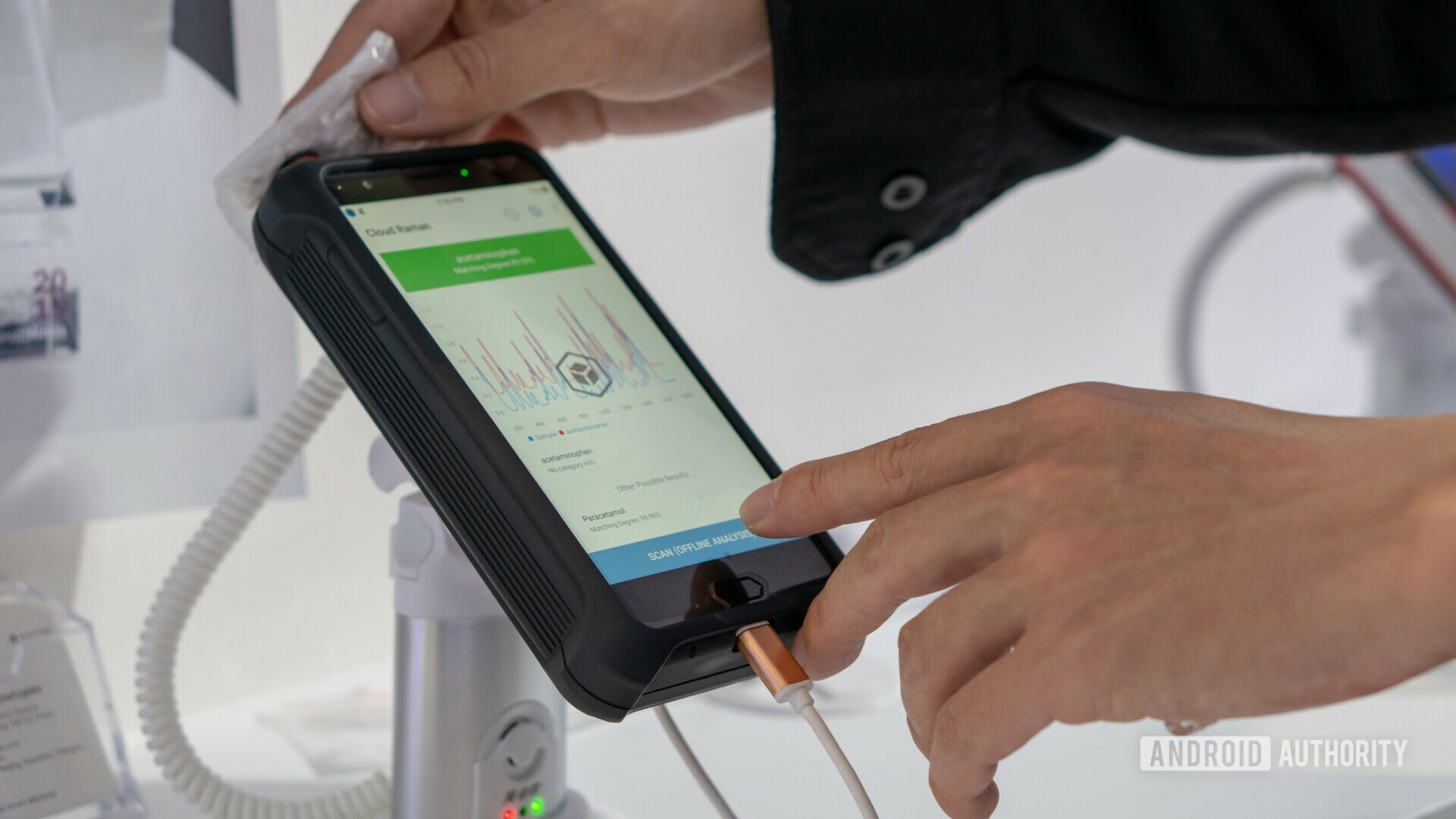Affiliate links on Android Authority may earn us a commission. Learn more.
Your next Qualcomm smartphone could be a tricorder
Published onDecember 7, 2020
- German company Trinamix is working on a module that enables spectroscopy on smartphones.
- This would allow users to scan materials, food, and more to get relevant information.
- Users will be able to scan their skin to get suggestions on the best products to use.
Smartphones are perhaps the closest thing we’ve got to Star Trek tricorders, allowing users to gather information around their world via cameras, sensors, and more. But Qualcomm and Germany company Trinamix are stepping things up in a big way, announcing plans to turn your phone into a molecular analyzer.
Trinamix has revealed that it’s building a small infrared sensing module for Qualcomm-powered smartphones that will be used for “near-infrared spectroscopy” on the go. The company adds that it will be using Qualcomm’s AI Engine smarts to process the captured molecular data.
Molecular analysis sounds pretty cutting-edge, but it’s kind of pointless without consumer use-cases. Fortunately, the company does have a first use-case in mind for the tech.
What will molecular analysis actually be used for?
“Future smartphones incorporating the technology will enable consumers to scan their skin on a molecular level and receive near-instantaneous suggestions on optimal skincare products for use on that day,” read an excerpt of an official press release, basing these recommendations on your skin’s lipid and moisture measurements.
Other mooted use-cases include measuring sugar levels in foods, and determining whether a material is real or fake (e.g. silk). Fortunately, Trinamix communications manager Steven Meyers told Android Authority that future use-cases will run on the existing hardware and would be made available via firmware updates rather than requiring new hardware.
Meyers also gave a few examples of how the company is using the tech in the business sector. These examples include measuring caffeine/moisture levels in coffee beans, measuring protein/fat/carbohydrate levels in different food types, and determining the composition of various plastics.
“From a technical standpoint, most of those B2B applications we have developed or will be developing can also be included in a future smartphone with our technology,” the communications manager explained.
What to know about the hardware
Meyers also noted that while the final design of the module isn’t finished yet, they aren’t expecting it to take up a ton of space on a smartphone.
“Once we’ve completed the reference design, we’ll be able to provide more information about the exact size. We expect it not to be larger than a current CMOS camera,” the executive noted.
So when exactly will we see this tech in a commercial smartphone then? Meyers said they expect to complete a reference design next year, followed by “a smartphone integration project.” There’s no word on when this project would be completed so for all we know the first phone might only arrive in 2022.
The news coincides with Qualcomm’s Snapdragon 888 reveal, so we’re expecting Trinamix’s molecular analysis technology to support the new chipset. But we do wonder whether the technology could come to phones with less impressive specifications.
“After the completion of our reference design we’ll have a specific understanding of the minimum requirements,” Meyers answered.
Not the first tricorder phone

It certainly makes for some interesting technology, but this wouldn’t be the first time we’ve seen molecular analysis on a smartphone. The little-known Changhong H2 was shown off back in 2017, featuring a built-in spectroscopic sensor.
This phone allowed you to theoretically scan fruit to check sugar levels, scan your body for fat levels, verify that the medication you’re getting is the real deal, and more. It’s not immediately clear whether this phone ever hit the market, although Chinese pricing was reportedly pegged at 2,999 yuan (~$450) at the time.
Would you buy a phone capable of molecular analysis?
We also saw the Raman Xi smartphone back at MWC 2019, although it packs a massively bulky design (see image above) and isn’t targeted at consumers. Instead, the Xi device is aimed at the pharmaceutical, food safety, and law enforcement fields.
In other words, the door is still open for Trinamix and OEM partners to deliver a mass market, consumer-focused smartphone with molecular analysis. We do wonder about use-cases and pricing though, as spending a huge premium on a few niche use-cases might not be worthwhile for many people. Nevertheless, the potential is also there for third-party developers to harness this tech and craft their own apps.
Would you buy a phone capable of molecular analysis? Let us know in the poll above!
Next: Qualcomm explains how the Snapdragon 888 is changing the camera game
